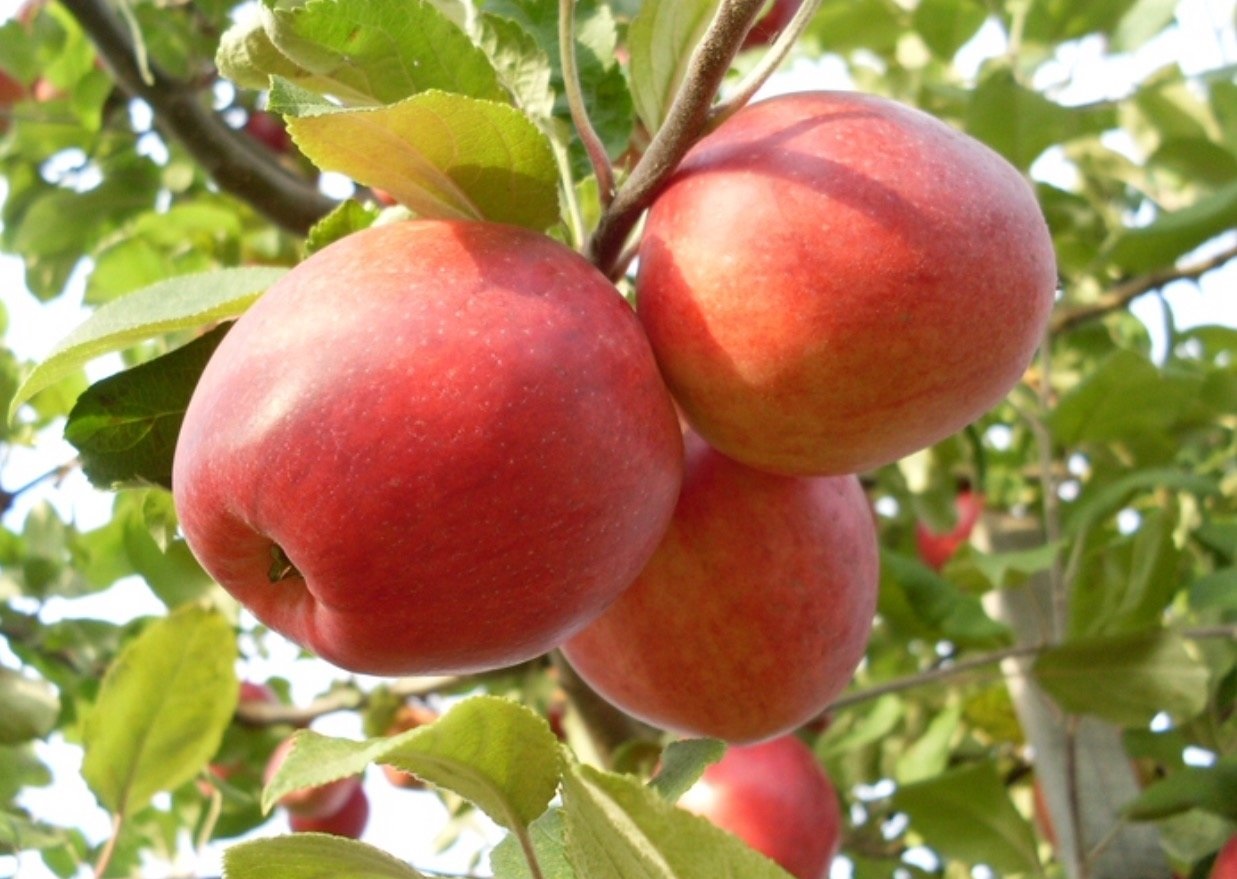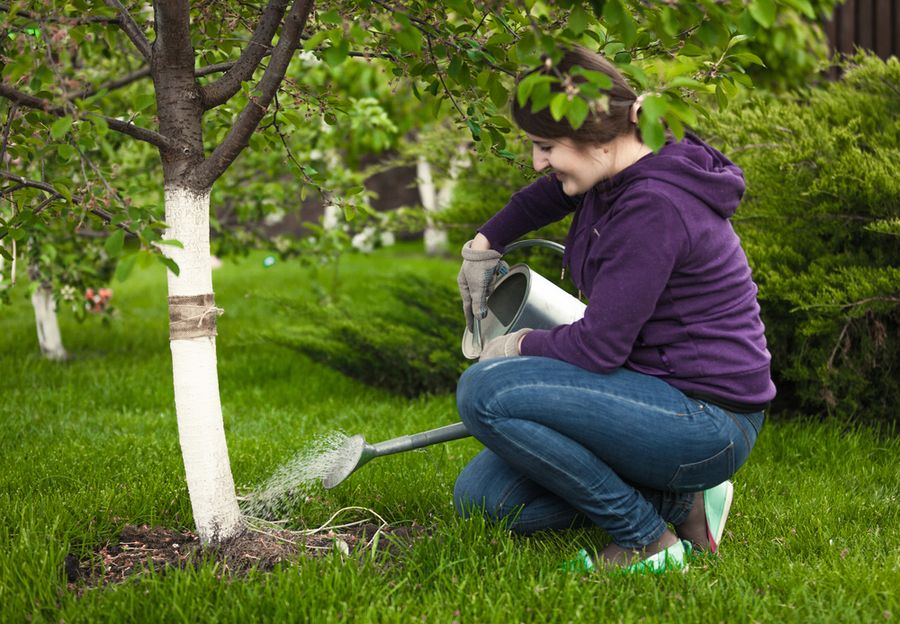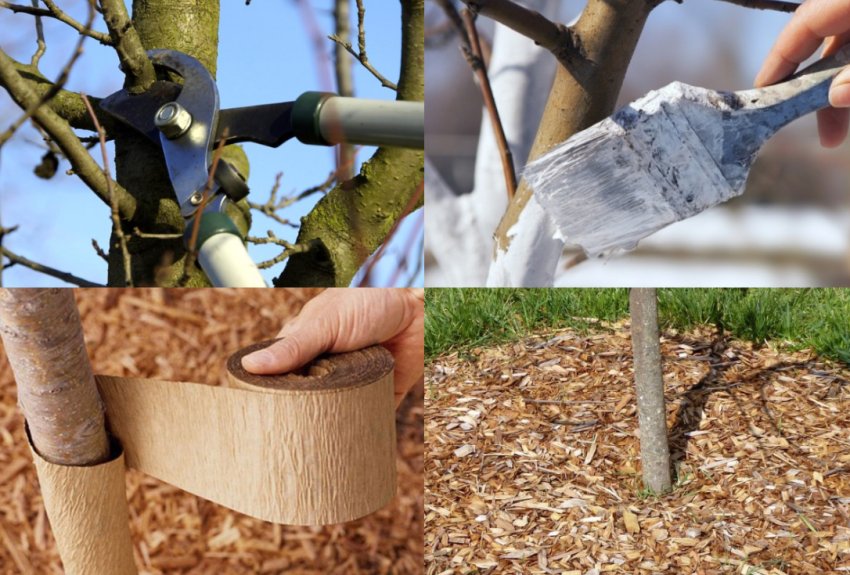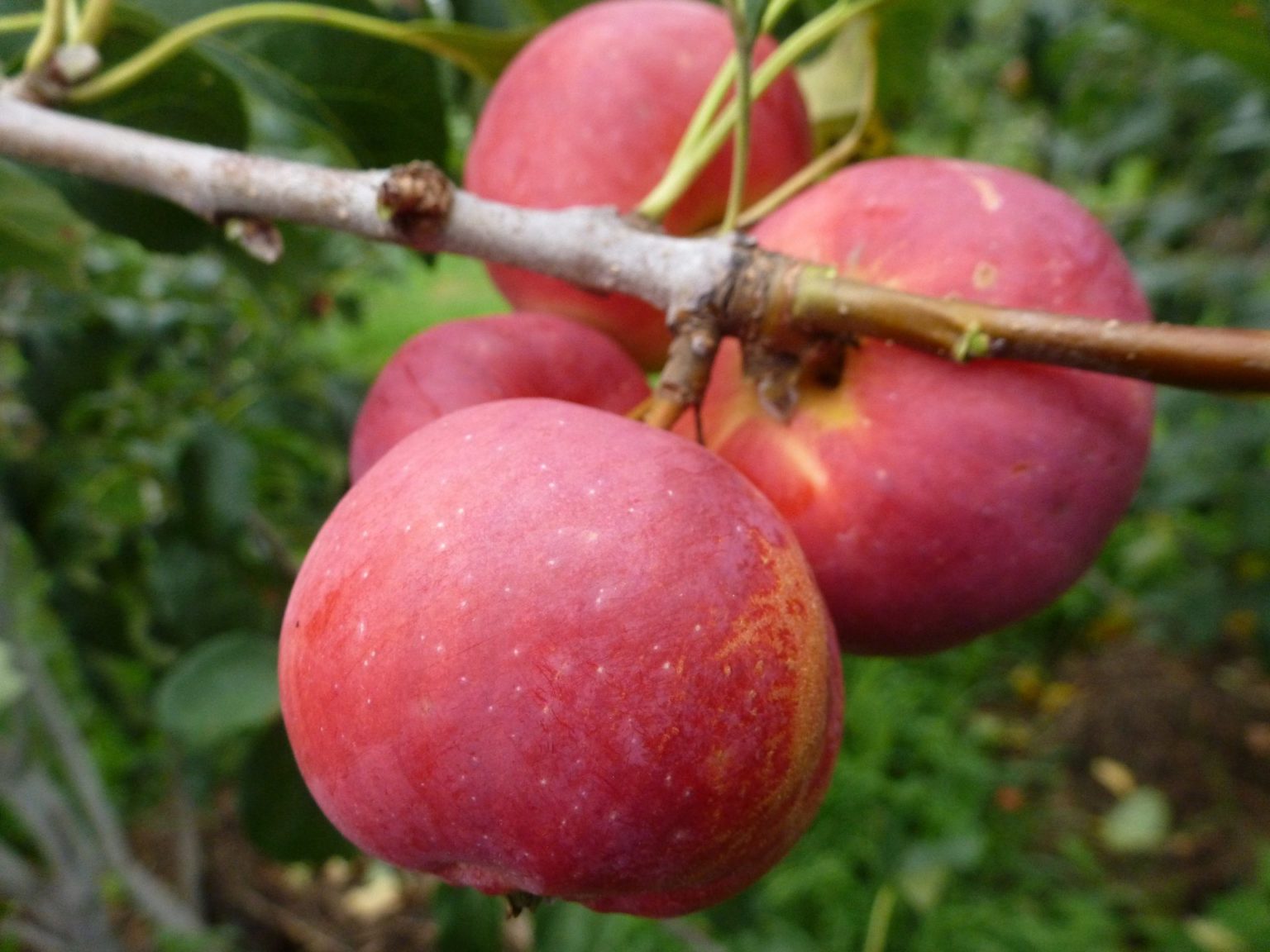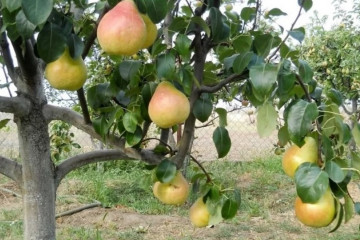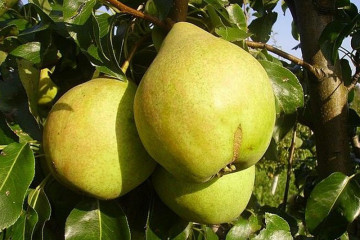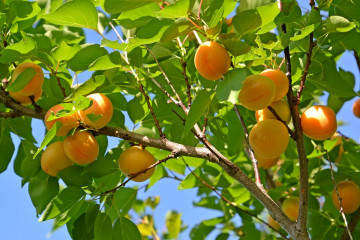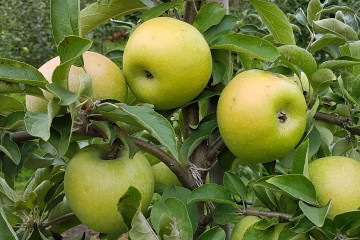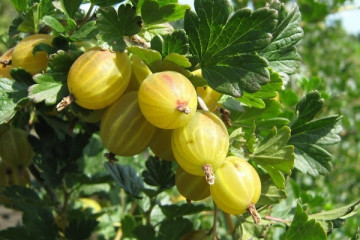Pepin saffron apple tree: variety description
Content:
The plots of experienced gardeners are often full of various fruit crops. Pears, peaches, plums, cherry plums and, of course, apple trees. As without them. Apple tree Pepin saffron is the most popular variety grown in home gardening, the best of the winter options. The pride of the breeder Michurin is in demand not only among summer residents of the Moscow Region, but also far beyond the borders of the country.
Breeding history of the variety
Apple tree Pepin saffron begins its history since 1907. The famous Ivan Michurin at one time experimented with winter varieties, in particular with the Renet variety, to which hybrid varieties of Lithuanian Pipinka and Golden Chinese apple trees were grafted. Thanks to the diligence of the scientist, Pepenk's apples were born in the Tambov province at the beginning of the last century. Years of trials and inspections have culminated in the entry of data on the new apple variety into the register of breeding achievements. It happened in 1947.
Since that time, the culture has been grown in the North-Western Region, Central Black Earth regions, the Middle Volga, North Caucasian and Siberian parts of Russia. In addition, the Saffron apple tree is successfully cultivated in Ukraine, Kazakhstan, Belarus, Estonia, Lithuania. Apple-tree Winter saffron became the progenitor of such varieties as: Souvenirs of Altai, Friendship of peoples, Altai pigeon, Autumn joy.
Botanical description
According to the description, the saffron Pepin apple tree is a culture that is a small tree, a maximum of 4 meters in height, with a rounded dense crown. The trunk is strong and sturdy. The branches are flowing. Shoots are thin and long, greenish-gray in color. The leaves are small, oval in shape, with an elongated sharp end and a bluish tint. The culture blooms with white small flowers.
The fruits are small, each weighing up to 120 g, with a thin, dense skin. During ripening, the apples change color from green to yellow with a ruddy barrel. They taste sweetish-sour, quite juicy. The aroma of the fruit is pronounced and has spicy notes. The pulp has a rich dense structure without grains, but not firm.
The hybrid received a high tasting rating. Fruits are used in preserves of any type, when cooking juices and compotes, making candied fruits and drying, urinating.
Advantages and disadvantages
Saffron Pepin is an apple tree with a number of advantages:
- gives a high yield from year to year;
- begins to bear fruit early;
- has high regeneration;
- has fruits of an elegant color;
- differs in a small percentage of apple shedding;
- well transported over long distances;
- has a high degree of self-fertility.
Against the background of its merits, culture also has some disadvantages. It:
- increased need for pruning in order to avoid a decrease in the size of the fruit and their spontaneous shedding;
- small size and weight of apples;
- low frost resistance.
Productivity and storage of fruits
Saffron pepin has received a good rating in the circles of summer residents and gardeners for its high yield and keeping quality of fruits. The tree begins to bear fruit on average from the fourth year of life, but without rest breaks. Each adult tree is capable of producing a yield of about 260-280 kg. The fruits are harvested from mid-September, but full ripeness can be said not earlier than after a month of storage. Such a crop is stored for about six months, maintaining the freshness and supply of nutrients in full.
For the successful storage of Saffron apples, you need to adhere to some rules:
- the crop must be harvested carefully, without damage;
- storage is carried out in a plastic or wooden container;
- the fruits are sprinkled with sawdust or separated with waxed paper;
- the storage room is maintained at a temperature of 0 to 2 degrees Celsius;
- for long-term keeping quality, take fruits without spots, cracks and crumpled sides.
Landing
This hybrid does not tolerate transplants, so it is advisable to immediately plant it in a permanent place. Lowlands with the presence of groundwater are not the best option for growing the Pepin apple tree.
The plant is planted in the spring when the soil warms up. For this:
- The seedling is soaked for 3-4 hours, then it is dipped in a clay mash.
- A hole is dug up to a meter deep and at least 1.2 meters in diameter.
- A mixture of ash, humus, garden soil and azofoska is poured into the prepared hole.
- Stakes are stuck into the hole to support the tree.
- The seedling is lowered between the supports, tied up and covered with earth.
- The tree is watered abundantly.
Agrotechnics
Compliance with the main rules of agricultural technology is the key to a future rich harvest and its taste.
Watering
A young tree requires regular irrigation. Watering is carried out every week at 15 liters per seedling.
By the end of summer, the Pepin apple variety is no longer watered. And only after the fall of the foliage is completed, pre-winter watering is carried out. To do this, the soil is moistened 1 m deep to protect the roots from freezing in winter.
Fertilizers
In spring, it is preferable to feed the culture with mineral fertilizers, and in autumn organic fertilizers are more suitable. During the budding period, fertilizing with a high content of potassium and phosphorus is applied 2 times a month.
Loosening
Do not ignore the procedure for loosening the soil. Removal of weeds and loosening is carried out one day after irrigation of the land.
Sanitization
In spring and autumn, trees need whitewashing and treatment of minor injuries and large wounds with garden varnish. This will prevent disease and scare away pests.
Pruning and shaping the crown
The Pepin apple variety must be pruned in spring and autumn. Autumn pruning is needed to remove weak branches, which are especially susceptible to fungal infections and diseases in the cold season.
In the spring, a crown is formed with the help of pruning. They do this from the third year of the tree's life. To do this, cut off:
- old branches on which buds and fruits are no longer formed;
- shoots damaged after wintering by heavy snowfalls and icing;
- branches that grow in the middle of the crown and strongly shade young fruits;
- remove the top of a tree over 8 years old;
Preparation for wintering
To protect the culture from damage and disease in the cold season, proper preparation for wintering is needed. For this:
- Shelter is being prepared. Young seedlings are wrapped in paper or covering material, before tying the branches with a rope. In mature trees, only the trunk turns to the branches.The soil under the apple tree is covered with mulch in the form of manure or peat.
- Trees protect from rodents by placing traps or repellents in the area. The trunks of the apple trees are wrapped in spruce or tar paper.
- Five-year-old trees are whitewashed for the winter with a special whitewash, water emulsion or lime.
Disease and pest control
The Pepin saffron variety is quite resistant to many types of diseases, but it is prone to scab. Most often, young or weakened trees are sick. In addition, if the rules for caring for trees are not followed, pests can attack them. This could be:
- The apple blossom beetle is a brown beetle with a long nose. Likes to eat young buds and buds. They are fighting him with the help of Karbofos and Votafoks.
- Comma-shaped scabbard. A small insect that sucks sap from a tree hides under the bark. It manifests itself as red spots on fruits and premature fall of foliage. Nitrafen helps in the fight against him.
- Apple moth. A butterfly that lays larvae in apples, and they eventually fall off wormy. Drugs against it - Zolon, Methadion, Cydial.
Pollinating varieties
Pepin may well self-pollinate. But it is good when pollinating varieties grow in the neighborhood, such as: Ordinary Antonovka, Snezhny Kalvit, Manet, Melba, Slavyanka, Welsey.
Variants and subspecies
Depending on the climate in the region, there are some subspecies of the variety that grow better under these conditions:
- Winter Cultural. The subspecies feels good in the Volga region, the Moscow region, the Middle Belt, and abroad. Prefers neutral soil.
- Luminous. A crop that is planted at an angle and bent to the ground. The variety is good for harsh climates.
- Winter variety with hanging shoots. Grows in higher elevations in light soil.
- Saffron Saratov. A very tall tree with a pyramidal crown. Late autumn view. Widespread in the Volga region.
- Sayan saffron is an ornamental fruit apple tree with small sweet and sour apples weighing up to 40 g. The variety is unique for its bright flowering.
Delicious apples of the Pepin saffron variety are frost-resistant, suitable for preservation, boiling and dried consumption. The fruits ripen in late summer and can be stored until next spring.


